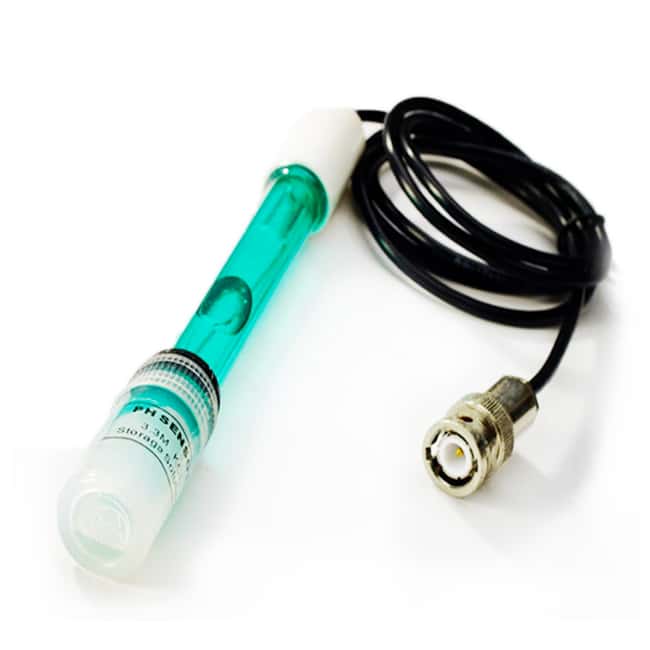The calomel electrode, as a commonly used reference electrode, plays an important role in chemical analysis and laboratory research. Its stability and reliability make it one of the preferred electrodes in many laboratories and industries.
Introducing the calomel electrode
A calomel electrode, also known as a silver/potassium chloride electrode, is a common reference electrode used in electrochemical measurements. Its main function is to provide a stable reference potential for comparison and calibration of potentials in the solution to be measured. A mercuric electrode usually consists of a silver/silver silver chloride electrode and a saturated potassium chloride solution, where the silver/silver silver chloride electrode serves to measure the potential and the saturated potassium chloride solution provides a stabilized electrode response.
Principle of operation of the calomel electrode
The principle of operation of a calomel electrode is based on the chemical reaction between a silver/silver silver chloride electrode and a saturated potassium chloride solution. The silver/silver silver chloride electrode is a half-cell coated with silver chloride. When this electrode is immersed in a saturated potassium chloride solution, a reaction between chloride ions and the silver electrode occurs, creating an equilibrium of silver and chloride ions. During this process, the concentration of silver ions remains constant, resulting in a stable potential. The principle of operation of a calomel electrode can be described as an equilibrium reaction between a silver/silver silver chloride electrode and a saturated potassium chloride solution, by which a stabilized potential of the electrode is maintained.
The electrode reaction of a calomel electrode can be expressed as:
Hg2Cl2(s)⇌2Hg(l)+2Cl− (aq)
In this reaction, solid mercurous chloride (Hg2Cl2) is hydrolyzed to produce mercury (Hg) and chloride ions (Cl^-). In saturated solutions of potassium chloride (KCl), the activity of the chloride ion remains constant, so that the electrode potential is determined primarily by the activity of the dissolution products of mercurous chloride.
Advantages of calomel electrodes
- High stability: Calomel electrodes have good stability under certain conditions, providing reliable potential measurements.
- Good reversibility: The reaction reversibility of the calomel electrode is good, capable of rapid response and recovery.
- Wide range: Calomel electrodes are suitable for pH measurement of various solutions and have a wide range of applications.
- High accuracy: The calomel electrode can provide high measurement accuracy under appropriate conditions.
- Easy to operate: Calomel electrodes are simple and do not require complex maintenance and operating procedures.
Areas of application for calomel electrodes
- pH measurement: Calomel electrodes can accurately measure the acidity or alkalinity of a solution, so they are widely used in chemical and biological experiments.
- Electrochemical analysis: Calomel electrodes can be used to measure the concentration of chloride ions and metal ions in a solution, and are a common tool in electrochemical analysis.
- Water treatment: In water treatment plants, the calomel electrode is used to monitor the pH value of water to ensure that the water quality meets the standard and to guarantee the safety of drinking water.
- Chemical production: Calomel electrodes are commonly used to monitor pH changes in chemical production processes to ensure the stability of the production process and product quality.
- Environmental monitoring: Calomel electrodes can be used to monitor the pH value of water in the environment, to monitor and control environmental pollution, and to maintain the ecological balance of the environment.
The Apure e-201 Laboratory Glass pH Electrode is a cartridge-type rechargeable composite electrode with a glass electrode and a reference electrode for measuring the pH value of aqueous solutions.

Precautions for the use of calomel electrodes
- Calibration: The calibration of the calorimetric electrode is performed periodically to ensure the accuracy of the measurement results. The frequency of calibration depends on the use, and it is generally recommended that calibration be performed before each use.
- Maintenance: Clean the measuring part of the calorimetric electrode regularly to avoid impurities that may affect the accuracy of the measurement. Avoid collision or vibration during use to maintain the integrity of the electrode.
- Storage: Store the calomel electrode properly and avoid prolonged exposure to air or dry environments. It is recommended that the electrode be placed in a pH-standard solution to maintain the stability of the electrode.
- Range of use: Understand the range and limitations of the use of the calomel electrode and avoid using it in unsuitable measurement scenarios that may damage the electrode or affect the measurement results.
- Handling: Handle the calomel electrode properly and avoid contact with corrosive substances or high-temperature environments to prolong the life of the electrode and ensure safe operation.
Summary
As an important electrochemical sensor, the calomel electrode has an irreplaceable role in scientific research and engineering practice. Its stability, reversibility, and wide range of applications make it a key tool in pH measurement and electrochemical analysis. By accurately measuring the pH value of a solution, the calomel electrode helps scientists and engineers to understand the acid-base nature of a solution, and thus carry out a variety of research and experiments in the fields of chemistry, biology, and the environment. Therefore, proper use and maintenance of a calomel electrode is essential to ensure accurate and reproducible results.
Apure also offers analyzers and electrodes for other water quality parameters, pressure measurement tools, level measurement instruments, flow measurement instruments and temperature measurement instruments. We also offer solutions on water treatment, please consult us.
